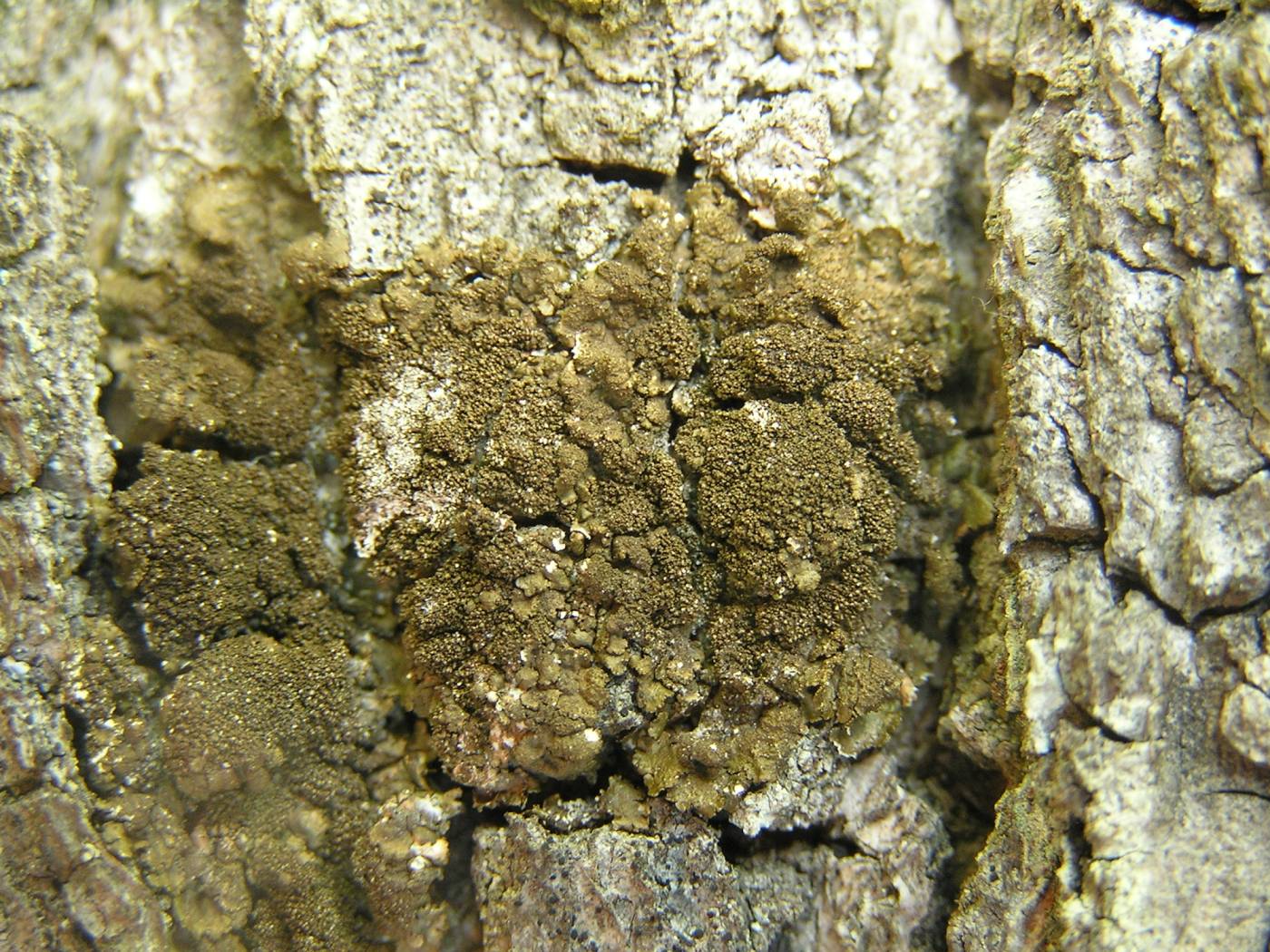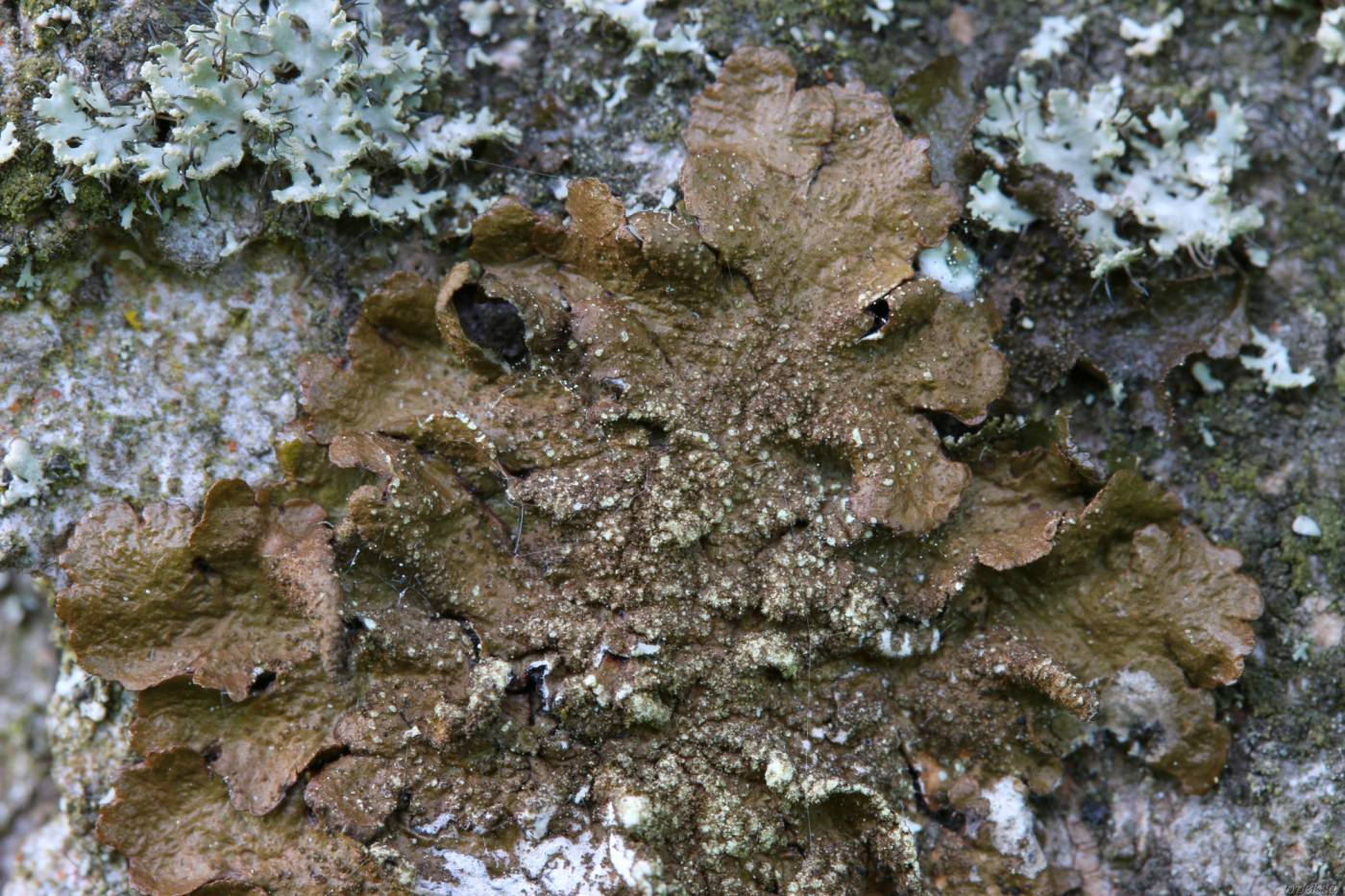It differs from our other species of Melanelixia by the spot, later confluent soralia on which small isidia are formed. These are easily wiped off and the exposed white medulla turns slightly yellow over time. Another characteristic feature of the species is its ‚chocolate‘ colour.
It is a common epiphytic lichen which grows on acidic to sub-neutral bark of mainly deciduous trees and shrubs, often as a pioneer on branches. The species has a wide ecological amplitude, being found on woody plants in open landscape as well as in open forests from lowlands to mountains. Rarely, it can also grow on wood and siliceous rocks. Its overall distribution is circumpolar-temporal-boreal. Due to acid rain, it was one of the relatively rare lichens in the Czech Republic in the second half of the 20th century. However, after the desulphurisation of power stations, it began to spread massively and nowadays it is one of the most abundant “parmelioid” lichens* in the Czech Republic.
taxonomic classification:Ascomycota → Lecanoromycetes → Lecanorales → Parmeliaceae → Melanelixia
most frequented synonyms:Melanelia subauriferaRed List (Liška & Palice 2010):VU – vulnerable
Occurrence in the Czech Republic
All records: 787, confirmed 585. One click on a selected square displays particular record(s), including their source(s).


